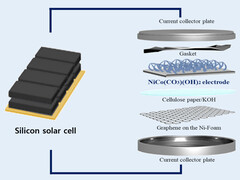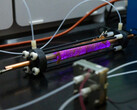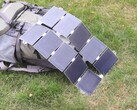At the Daegu Gyeongbuk Institute of Science and Technology in South Korea, a special capacitor that is integrated directly into the electronics of solar cells has been developed. In doing so, researchers have succeeded in utilizing electricity from a photovoltaic system away from a local power grid connection. This means that the energy collected from the sun only has to be used when it is actually needed. In addition, the specially developed capacitor has such a high power density that it can even be used to quickly charge large batteries.
To make this possible, a special nickel foam is created and supplemented with manganese, cobalt, copper, iron and zinc. The result is greatly increased conductivity and stability of the electrodes, with a high energy density of over 35 watt hours per kilogram. For an accumulator, this would be a poor value. For a capacitor, the value is around three times higher than in previous experiments.
A much more important aspect of a supercapacitor is the power density, which is exceptionally high at 2.5 kilowatts and, in a different arrangement, even 12.3 kilowatts per kilogram.
Lifespan on par with solar cells
Added to this is a durability of well over 5,000 charging cycles, as the study found that the remaining capacity was still at 87.1% afterwards. Accordingly, such ultracapacitors or supercapacitors last much longer if they are less stressed.
Even 100,000 cycles have also been reached in tests, depending on the conditions. The capacitor should thus have no problem keeping up with a photovoltaic system that can be used for 20 or 25 years. Due to the typical voltage loss and general degradation over time, the efficiency is only just above 5%, significantly less than that of a simple solar cell.
And yet there are various possible applications. For example, off-grid use is conceivable if electricity is needed in times of little to no sunlight. Also conceivable is the provision of collected energy during periods of high electricity demand. Last but not least, the extremely high output would allow large batteries to be charged directly from solar power.



















